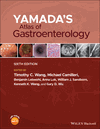Intestinal ischemia and vasculitides
Summary
This chapter offers diverse images that provide an overview of intestinal ischemia and vasculitides and aims to provide a synopsis through pictures and illustrations rather than through text. Intestinal ischemia comprises a variety of disorders that develop as a result of inadequate blood supply to some portion of the gastrointestinal tract. The gastrointestinal tract is supplied by three major branches of the aorta: the celiac axis, the superior mesenteric artery, and the inferior mesenteric artery. The diagnosis of mesenteric ischemia rests upon the combination of clinical suspicion and imaging findings. Ischemic colitis is a condition that develops when the blood supply to the colon is insufficient to sustain tissue needs. There are four main forms of ischemic colitis: transient ulcerating ischemic colitis, reversible ischemic colopathy, segmental ulcerating colitis with stricture, and fulminant universal ischemic colitis.



